
The Business of Fashion
Agenda-setting intelligence, analysis and advice for the global fashion community.

Agenda-setting intelligence, analysis and advice for the global fashion community.

JINAN, China – The steady rise of China’s domestic brands can be seen on the shopping streets of just about any tier-two city.
Take Jinan, the provincial capital of Shandong Province where international luxury brands rub shoulders with increasingly competitive and ambitious domestic fashion players along lantern-lined boulevards.
In this city of eight million people, the two sides literally face off against one another, with the high-end Parc 66 mall, home to Louis Vuitton, Dolce & Gabbana and Tiffany, sitting opposite a line-up of mass market players like Metersbonwe, Anta, Li Ning and Heilan Home just across the road.
While these names may be unfamiliar to most Western customers, they are ubiquitous in China, boasting nationwide store networks in the thousands. After weathering the influx of wave after wave of international brands at every price point and positioning, major domestic players have recently come back stronger, sleeker and more difficult for international brands to beat.
ADVERTISEMENT
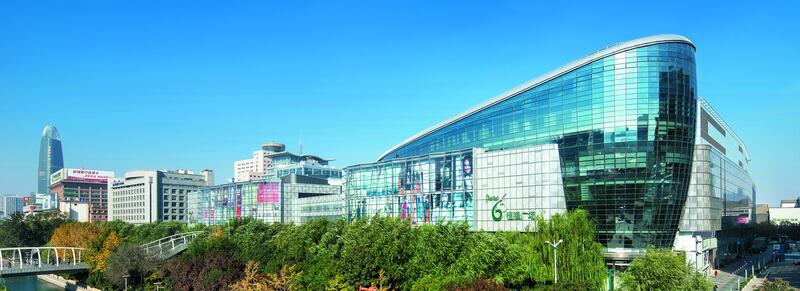
Parc 66, Jinan | Source: Courtesy
Among China’s leading fashion players, two have just been ranked by the McKinsey Global Fashion Index (MGFI) as global high performers in terms of economic profit, a measure of value creation that looks at a company’s profit less its cost of capital, thus taking into account how much each company invested to generate its performance.
The 2020 edition of BoF and McKinsey's annual State of Fashion report, released today, shows Anta Sports and Heilan Home (HLA Corporation) catapulting into an elite group of 20 global brands, dubbed the "Super Winners". The two Chinese firms alongside Lululemon join companies including LVMH, Richemont, Nike, Inditex, Kering, Hermès, Fast Retailing, Adidas, H&M, Burberry and other household names.
Both Anta Sports and Heilan Home (HLA Corporation) have leap-frogged past several former "Super Winners" that fell off the list, such as Michael Kors and Gap, reflecting the growing strength and popularity of Chinese companies with Chinese consumers, who this year overtook their American counterparts as the biggest fashion market in the world.
Anta Sports can attribute much of its recent success to the global shift toward sportswear, which is taking up a larger share of the overall fashion market each year. MGFI figures expect the category to once again outpace the rest of the apparel industry with 6 to 7 percent growth in 2020.
Anta is also the beneficiary of a particularly strong growth rate for the sportswear category within its home market, combined with the well-documented guochao or national pride trend, which is seeing young Chinese consumers increasingly embrace domestic brands. In a survey conducted earlier this year, nearly half the Chinese respondents told consultancies CSG and Ruder Finn that they intend to buy more Chinese fashion brands in the future than they had previously.
Domestic brands have [worked hard to] upgrade themselves in terms of their brand image, product quality and store image
What’s more, Anta Founder and Chief Executive Ding Shizhong has been on something of a spending spree, adding brands at different price points and segments to its portfolio, meaning they are able to capitalise on both the “consumer upgrade” (premiumisation) trend within the Chinese market, a segment CMB International Vice President Walter Woo estimates makes up about 30 percent of consumers, as well as a “downgrading” trend encompassing 20 percent of consumers who now look to spend less on incidentals like apparel in the face of financial pressures like the rising cost of buying a home in many Chinese cities.
Anta’s main sportswear brand, with a price point of 200 to 300 yuan ($28 to $43) is a suitable option for these downgraders, while the (primarily younger, Post-95 Generation) consumers looking for premiumisation have embraced Fila, for which Anta acquired the Chinese rights in 2009, with its average price point hovering around 1500 yuan ($213).
ADVERTISEMENT
In the first half of 2019, revenue from the Anta brand and Fila surged 18.3 percent and 79.9 percent year-on-year, respectively. In a move to further diversify its portfolio, Anta also paid €4.6 billion ($5.1 billion) for European sportswear group Amer earlier this year.
Though it’s firmly rooted in China’s mass market, with an average price point between 100 and 300 yuan ($14 to $43), menswear retailer Heilan Home, founded by Zhou Jianping in 2002 and now boasting more than 5,200 outlets around the country, has also been able to plug into China’s consumer upgrade, even without high prices.
“Domestic brands have [worked hard to] upgrade themselves in terms of their brand image, product quality and store image , and because of these upgrades they are able to [compete with international brands and] gain more market share,” Woo explained.
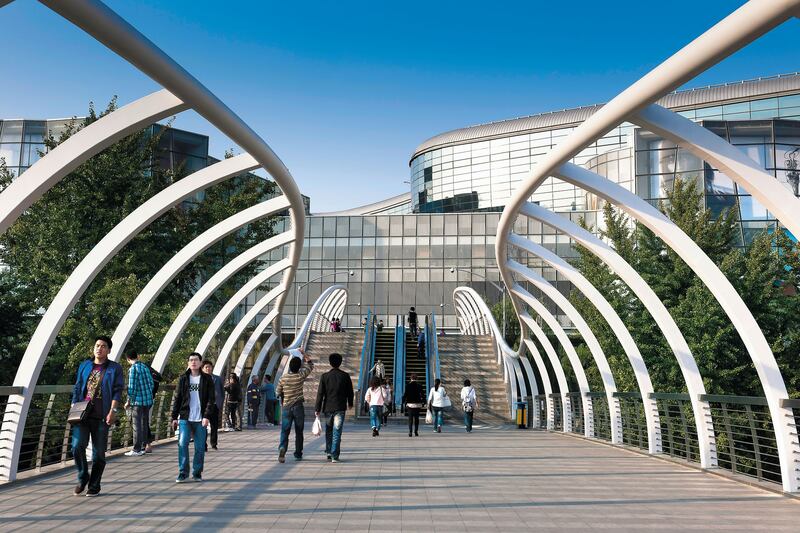
Consumers in Jinan, the capital of Shandong Province | Source: Courtesy
According to Yang Yan, Assistant Director of the Case Study Centre at Beijing’s Cheung Kong Graduate School of Business, as China’s middle class consumer segment has grown and matured, a new idea of value has emerged. The concept called “high value performance” proves to be one of the most powerful new metrics through which Chinese consumers judge a brand.
“In the [consumer mindset of the] past, high price equalled high quality and low price equalled low quality, but this is changing,” Yang explained. “[Brands such as] Heilan Home and Anta have grasped the need to provide consumers with a more cost effective product, combined with a [positive] shopping experience … on all channels.”
The sheer reach of major mass market retailers, such as Heilan Home and Metersbonwe, also contributes to their recent success. Brick-and-mortar retail still plays an important role in China, with 85 percent of shoppers engaging with both online and offline touchpoints, compared with 80 percent in 2017. In response, China’s largest internet firms have been pushing their way into brick-and-mortar retail, primarily by acquiring firms with large physical networks. In 2018, Tencent (the parent company of WeChat) paid 2.5 billion yuan ($355.35 million) for a 5.31 percent stake of Heilan Home, after a rumoured bidding war also involving Alibaba and JD.com.
“[In terms of] mass market apparel, the international fast fashion players haven’t [done a great job] of localising for China’s eco-system,” Woo said. “The local brands know their customers better and the products and designs they have adopted are more popular. Their [marketing] content is also better localised.”
ADVERTISEMENT
Though international brands still dominate high-end luxury retail, the mass and mid-range has proven tougher to crack for global giants, and it won’t get any easier with Chinese players taking every opportunity to increase their home ground advantage.
时尚与美容 FASHION & BEAUTY

Kris Wu and the all-star "Fourtry" team | Source: Courtesy
Can Kris Wu Save China's Fashion Entertainment Scene? Louis Vuitton ambassador Kris Wu and Dior ambassador Angelababy are just two of China's celebrities tapped to partake in online video platform iQiyi's recently launched reality TV show "Fourtry," after the company launched successful shows "The Rap of China" and "The Streetdance of China." "Fourtry" follows the duo, singer Will Pan and other celebrities as they operate a store in Tokyo focused on stocking guochao, or Chinese-style streetwear brands, already drawing hype thanks to its all-star cast. Whereas older Chinese fashion reality TV shows "Hey Muse" and "Cool China" were dismissed as tacky, last year's "Fashion Master" has stayed relevant by tapping celebrities and industry leaders like Roy Wang, Vogue China's Angelica Cheung and couturier Guo Pei. It's likely that iQiyi's latest bet will also be buoyed by its star power – few parts of China's fashion industry aren't. (Nino Tang for BoF China)
Guo Pei Holds First Major China Show
Another entrant to China's increasingly crowded calendar of fashion weeks, the In Style Jinan International Fashion Week was hosted this week in the capital of Shandong Province, a traditional stronghold of China's textiles industry. The event was held in part to celebrate the signing of a trade agreement between China, Japan and Korea (Shandong Province is a particularly convenient gateway to these neighbouring countries) and saw the Asian Couture Federation (ACF) bring designers from China, Japan and Korea (as well as couturiers from Indonesia and Australia), to the city for a schedule of shows, forums and a gala dinner. The event marked the first time Guo Pei, a regular at Paris Couture Week and revered in China as something of a national treasure, had mounted a large-scale show in her home country. (Soho)
China Is the Biggest Market for Beauty Advertising
Global beauty advertising spending will grow 2.7 percent this year to hit $14.4 billion, before going on to reach $15.8 billion by 2021, according to Publicis Groupe-owned analytics firm Zenith. The category's acceleration will be driven by digital advertising and new data functionalities — by 2021, online channels will occupy half of beauty advertising budgets, with television advertisements claiming 35 percent and print ads accounting for 8 percent. According to Zenith, China is now the largest market for beauty advertising and will be worth $6.2 billion by the end of the year, due in part to the growing demand for male beauty products and its mature e-commerce advertising infrastructure. Though the US' $2.6 billion market ranks second, its channels are slated for a shakeup: television still takes up 40 percent of beauty advertisement spend with print claiming a close 37 percent and digital channels lagging behind with a 23 percent share. (Jiemian)
科技与创新 TECH & INNOVATION
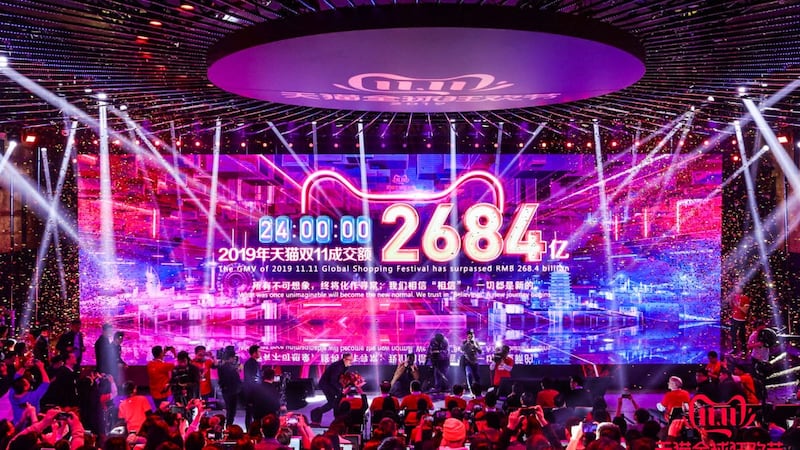
Alibaba's Singles Day once again broke sales records | Source: Courtesy
Alibaba Fights Back Against Singles’ Day Data Suspicions
Months before this year's Singles' Day sales for Alibaba hit a record-breaking $38 billion, a Chinese netizen took to social media platform Weibo and called out the retail giant's Tmall and Taobao platforms for falsifying sales data, deemed "too perfect," and provided calculations for reference. (Local media later reported that the Weibo account was taken down for "attracting too many complaints"). The night after the shopping extravaganza, Tmall's press office Weibo account announced that the company was pursuing legal action against the accounts that started the rumours and hoped that such "insults to intelligence" wouldn't happen again. The update — now deleted — added that posts accusing Alibaba of falsifying data were almost identical to articles making the same claims in 2015. "Every year, Tmall's Singles' Day is witnessed and experienced by over one hundred global media outlets, and the data is absolutely real and accurate," a spokesperson for Alibaba said. (Flash Fashion)
TikTok Looking at Ways to Shake Off Its Ties to China
The ByteDance-owned viral short video app, which has now raked in over 1.5 billion downloads across iOS and Google app stores, according to Sensor Tower, is hoping to distance itself from its Beijing roots. According to people familiar with the matter, TikTok's employees and advisers have been pitching senior executives with ideas to rebrand the increasingly scrutinised tech firm. Some suggestions include focusing on Southeast Asia, which would help distance the app from China, alongside enacting rebranding initiatives in the US. Sources said that TikTok (the international equivalent of China's Douyin) is actively working to cut down Chinese content on the app, as people close to the company increasingly see its ownership as a liability. (The Wall Street Journal)
Tencent Q3 Results Show Drop in Profits
In a mixed bag of results for the Chinese digital giant, Tencent saw a steady increase in revenue, which rose 21 percent compared with the same period last year. However, the company also saw profits decline 13 percent year-on-year. This fall is in part due to a decrease in advertising revenue as marketers tighten budgets, and increased competition for these budgets coming in the form of ByteDance, with its platforms continuing to eat into user time spent within Tencent's eco-system. The company has also been impacted by increasing government regulation, particularly in relation to its lucrative games business. (Walk the Chat)
消费与零售 CONSUMER & RETAIL
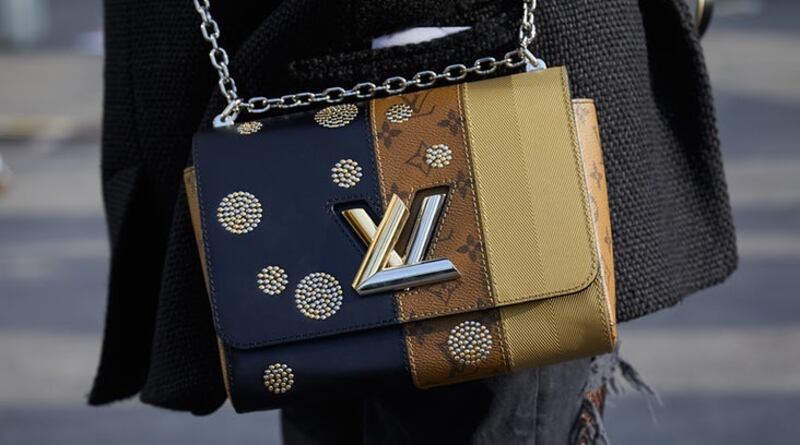
Louis Vuitton handbag | Source: Shutterstock
Luxury Price Increases Unlikely to Dissuade Chinese Shoppers
Although China's luxury consumption is soldiering on amid an ongoing US-China trade war and global macroeconomic slowdown, a recent wave of price increases enacted by luxury brands may halt this advance. Multiple tax cuts in recent years have pushed for price harmonisation and helped boost domestic luxury spending, but brands from Louis Vuitton and Chanel have reportedly upped prices 4 to 11 percent and 10 to 12 percent respectively since late October, while Dior has increased prices 6 to 14 percent. Rising production costs and depreciation of the South Korean won have also spurred price adjustments there. However, Chinese media outlets are optimistic about the local appetite for European brands, at least where core luxury shoppers are concerned, predicting prestige and popularity will ultimately rule over price. (Jing Daily)
China's Retail Sales up 8.1 Percent in First 10 Months
According to the country's National Bureau of Statistics, China's retail sales of consumer goods rose 8.1 percent year-on-year in the January-October period. Total retail sales amounted to 33.48 trillion yuan (about 4.8 trillion US dollars) and growth would have looked rosier without the drag of car sales. Excluding sales of automobiles, the growth rate reached 9 percent in the first ten months of the year. Retail sales in rural areas rose 9 percent, outpacing the 7.9 percent expansion in urban areas, while online sales continued to see a robust expansion with a year-on-year rise of 16.4 percent. (Xinhua)
Experiential Future for Brick and Mortar in China
In spite of the hoopla surrounding Singles' Day and the continuing increase in the share of sales happening online in China, brick and mortar retailers are also getting a boost. In part, the strength of online shopping in China and its extraordinary ease (with almost 90 percent of consumers adopting mobile payment and national laws ensuring generous returns policies) has pushed physical retailers to adopt these conveniences, and add upon them with high-tech and fun in-store experiences. Virtual reality, augmented reality, facial recognition and big data analysis are coming together in a potent mix that is transforming the traditional retail space into what some consultants call "experiential" – a hybrid of experience and experiment – shopping. (South China Morning Post)
政治、经济、社会 POLITICS, ECONOMY, SOCIETY
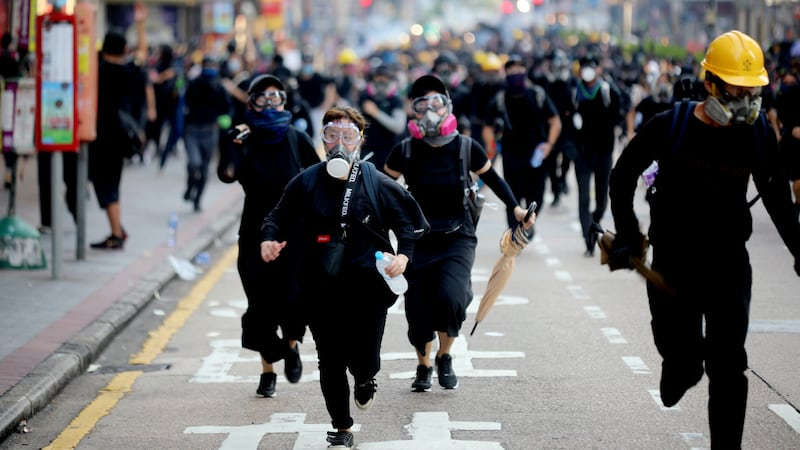
Protestors in Hong Kong on October 1, 2019 | Source: Shutterstock
Hong Kong’s Anti-Mask Law Deemed Unconstitutional by High Court
In a blow to Hong Kong's besieged government, judges found on November 18 that its attempted use of emergency legislation to enact a 'mask ban' against local pro-democracy protestors was incompatible with the region's Basic Law. The court ruled that the ban, effected in October to prohibit face covering in public areas could "have a significant impact on the freedom of expression in peaceful public meetings and processions." Police and prosecutors have stopped enforcing the ban and adjourned cases where protestors were arrested on its grounds. In response to the ruling, legal experts in mainland China argue that the decision will encourage local protestors and have put forward suggestions of a re-interpretation of the Basic Law by judges in the mainland. (South China Morning Post)
Chinese Netizens Jump on the Anti-Zuckerberg Bandwagon
Following recent speeches showing Zuckerberg taking a hard line on China, an article has gone viral on China's WeChat platform vividly titled, "China's good son-in-law Zuckerberg suddenly stabbed his father-in-law in the back." This sense of betrayal stems from the fact that, until quite recently, Zuckerberg was actively trying to woo China. With tensions rising between the US and China, however, Zuckerberg has taken a very different stance. In comments championing free expression and advocating for less scrutiny of Facebook, Zuckerberg repeatedly brought up China. He defended Facebook's decision to allow potentially misleading political campaign ads by criticizing censorship in China. (Abacus)
More Than 70 Percent of Chinese Divorces are Initiated by Women
Overturning popularly held assumptions that Chinese women tend to endure unhappy marriages due to societal expectations and economic pressures, a recent speech given by Zhou Qiang, president of the Supreme People's Court and China's highest-ranking judge, revealed that roughly 74 percent of divorces in China are initiated by women. Chinese social media reacted positively to the news, with one Weibo user commenting that the news is "a pivotal achievement in Chinese women's liberation. It indicates that they are not willing to put up with unhappiness in marriage anymore." In other signs that Chinese women, at least those of a certain socioeconomic class, are embracing independence, a recent report released by real-estate broker platform Beike Zhaofang, noted that 46.7 percent of all Chinese homebuyers in 2018 were women. (SupChina)
China Decoded wants to hear from you. Send tips, suggestions, complaints and compliments to our Shanghai-based Asia Correspondent casey.hall@businessoffashion.com.
With consumers tightening their belts in China, the battle between global fast fashion brands and local high street giants has intensified.
Investors are bracing for a steep slowdown in luxury sales when luxury companies report their first quarter results, reflecting lacklustre Chinese demand.
The French beauty giant’s two latest deals are part of a wider M&A push by global players to capture a larger slice of the China market, targeting buzzy high-end brands that offer products with distinctive Chinese elements.
Post-Covid spend by US tourists in Europe has surged past 2019 levels. Chinese travellers, by contrast, have largely favoured domestic and regional destinations like Hong Kong, Singapore and Japan.